Êtes-vous ravi de commencer à broder mais je ne sais pas par où commencer? Pour commencer, Il est important de comprendre les bases de la machine à broder avant de plonger dans votre premier projet. Une fois que vous avez une connaissance claire du processus, Vous pourrez créer de beaux designs en toute confiance.
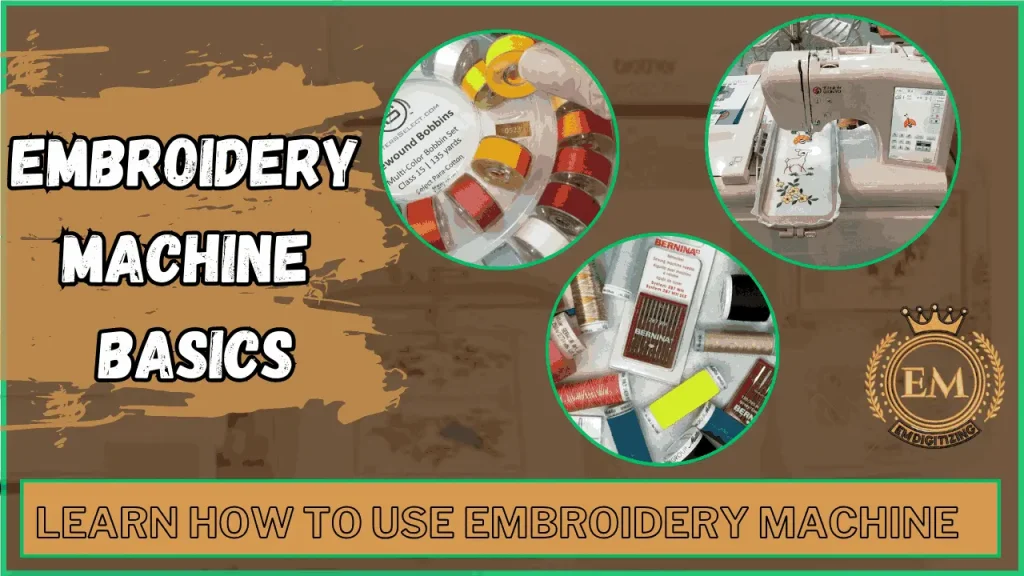
Dans ce guide, Nous allons d'abord expliquer les composants essentiels d'une machine à broder, puis vous guider à travers un processus étape par étape simple que vous pouvez suivre pour utiliser une machine à broder pour n'importe quel design, whether it’;est une conception intégrée ou une personnalité.
Let’;s commencer!
Bases de la machine à broder
Qu'est-ce qu'une machine à broder?
Un Machine à broder est un outil conçu spécifiquement pour créer des conceptions de broderie sur le tissu. Contrairement à une machine à coudre ordinaire, Il casse automatiquement les modèles complexes et peut être programmé pour reproduire les conceptions avec précision.
Types de machines à broder
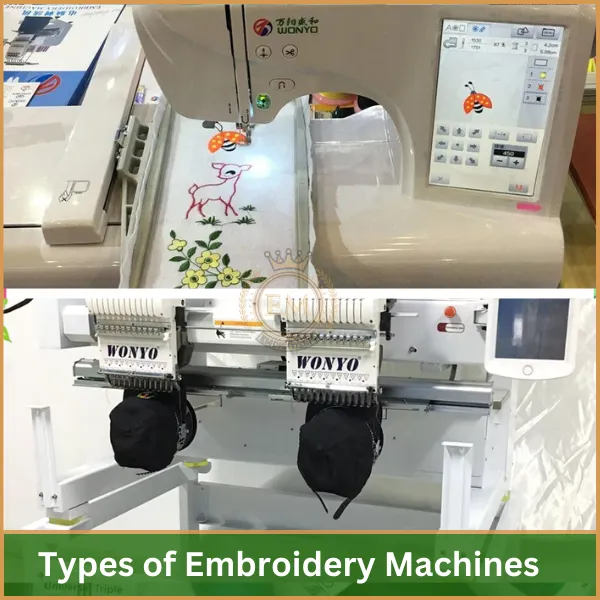
Quand il s'agit de machines à broder, Il y a deux principaux types que vous devriez connaître: à aiguille unique et multi-aiguille Machines.
Chacun a ses propres avantages et limitations, so it’;est important de choisir le bon en fonction de vos besoins.
Comprendre ces différences vous aidera à prendre de meilleures décisions pour vos projets.
Type de machine à broder | Description | Avantages | Les inconvénients |
Machines à aiguille | Ces machines utilisent une seule aiguille pour créer des conceptions de broderie. Ils sont les plus courants pour un usage domestique et sont parfaits pour les petits, Projets plus simples. |
|
|
Machines à plusieurs reprises | Les machines à plusieurs reprises ont plusieurs aiguilles (généralement 4 à 10) qui permettent à l'utilisation de plusieurs couleurs de fil simultanément, Les rendre idéaux pour une utilisation professionnelle et des conceptions plus grandes. |
|
|
Comprendre le type de machine que vous avez vous aidera à mieux gérer les projets. L'apprentissage de ces bases de la machine à broder est crucial avant de commencer votre premier projet.
Parties clés d'une machine à broder
Avant de commencer votre voyage de broderie, Il est essentiel de comprendre les principaux composants de votre machine. Chaque partie joue un rôle crucial dans le processus global de broderie:
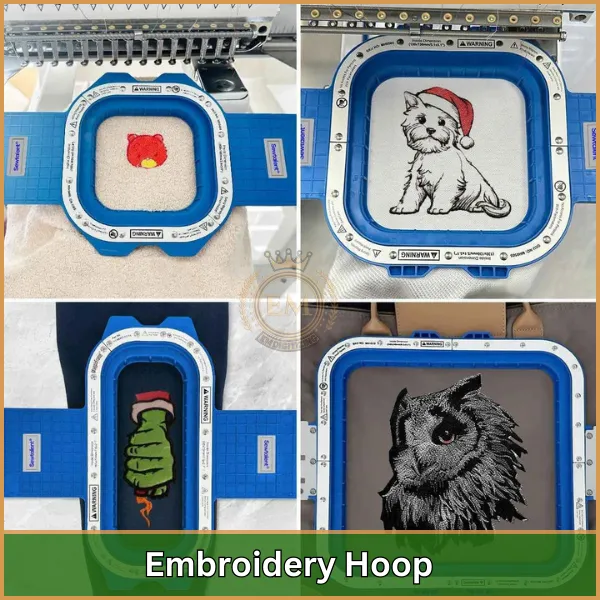
Cerceau de broderie: Il s'agit d'un cadre circulaire ou rectangulaire qui maintient votre tissu en toute sécurité pendant que la machine fonctionne. Il garantit que le tissu ne bouge pas ou ne se frois pas, Permettre à la machine de coudre avec précision.
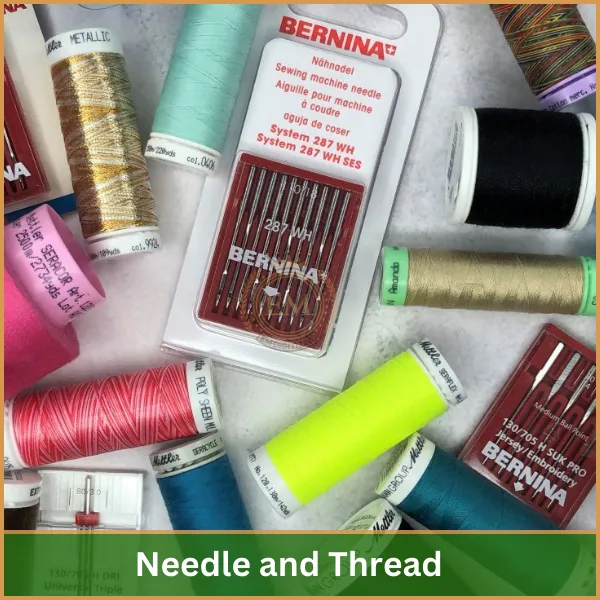
Aiguille et fil: L'aiguille se déplace de haut en bas à travers le tissu, tandis que le fil forme les points réels.
Ensemble, Ils créent le design sur le tissu. Différents types d'aiguilles et de threads sont utilisés en fonction des exigences de tissu et de conception.
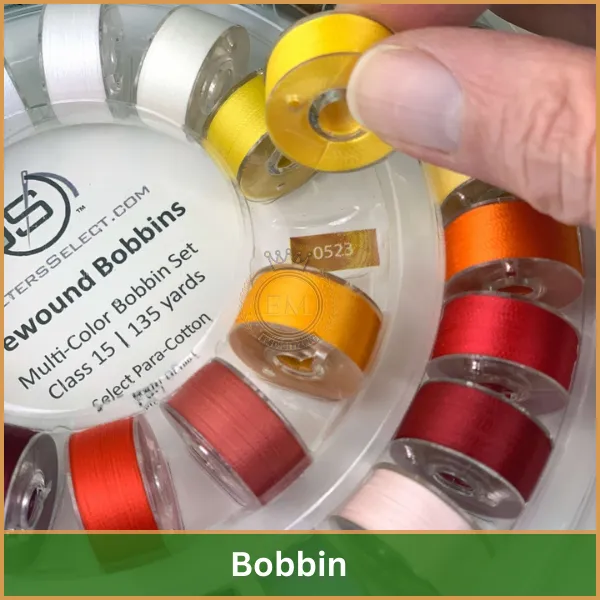
Bobine: La bobine tient le fil inférieur, qui fonctionne avec le fil supérieur de l'aiguille pour former les points.
C'est une petite bobine placée dans la partie inférieure de la machine, Et sans ça, Les points ne verrouilleraient pas correctement.
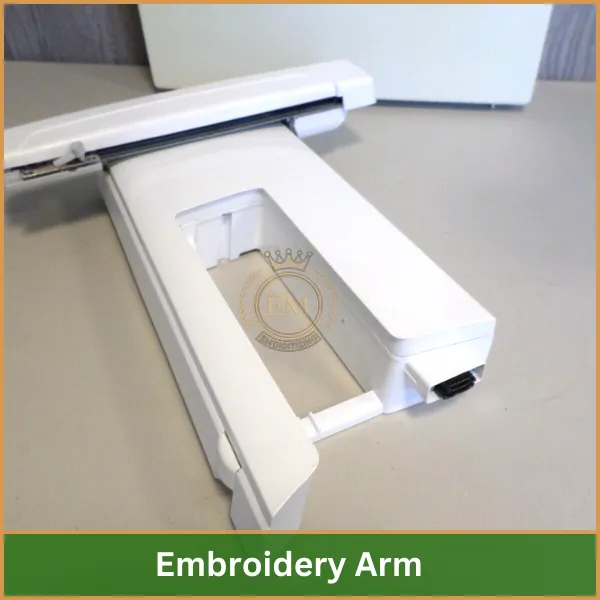
Bras de broderie: Ce bras est responsable du déplacement du cercle à broder et guider l'aiguille pour coudre la conception dans différentes positions. Il suit le chemin programmé de votre conception pour s'assurer que les points sont placés avec précision.
Comprendre comment ces pièces fonctionnent ensemble est une étape fondamentale pour apprendre à l'aide d'une machine à broder. Prenez votre temps pour explorer chaque partie et vous référer au manuel de votre machine pour des instructions spécifiques.
Quelles sont les principales fonctionnalités de la machine à broder?
Les machines à broder sont livrées avec une variété de fonctionnalités qui améliorent leur fonctionnalité et leur convivialité. Voici les principales fonctionnalités à considérer lorsque vous envisagez des machines à broder:
1. Zone de broderie
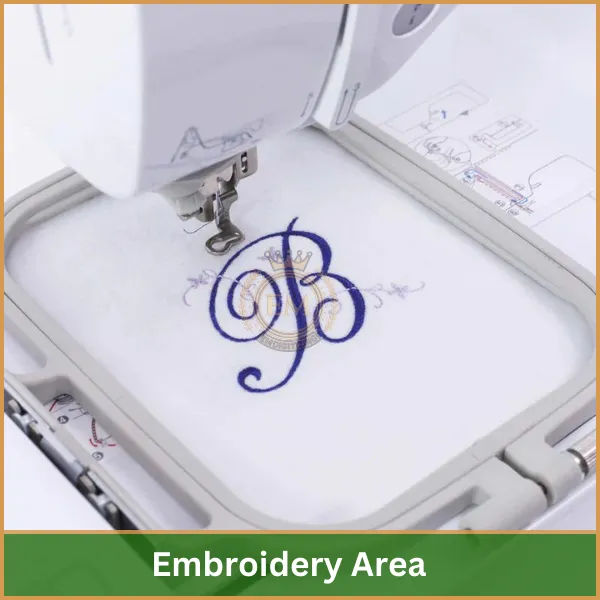
La taille de la zone de broderie dicte la taille maximale des conceptions que vous pouvez créer.
Les machines plus grandes ont souvent des cerceaux plus gros, Permettre des conceptions plus étendues.
2. Conceptions et personnalisation intégrées
De nombreuses machines sont livrées avec une variété de designs préinstallés. Certains permettent l'importation conceptions personnalisées via USB ou d'autres moyens, Fournir une flexibilité dans les choix de projet.
3. Interface utilisateur
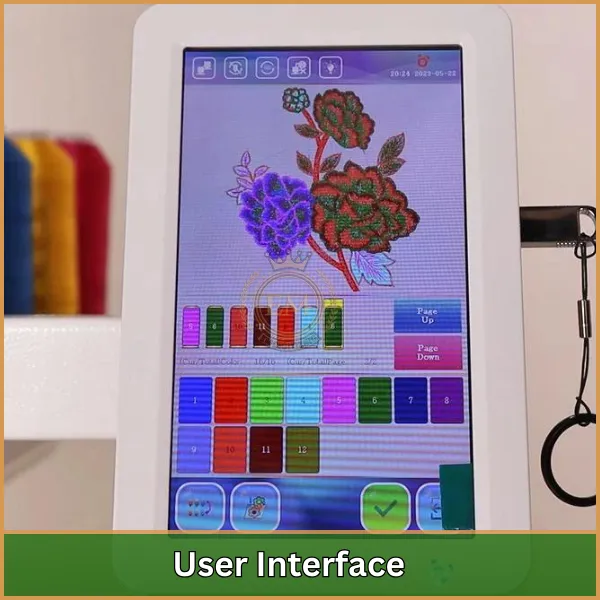
Une interface conviviale avec un écran tactile Color LCD facilite la navigation dans les conceptions, ajuster les paramètres, et prévisualiser votre travail avant de coudre.
4. Rapidité et efficacité
Les machines peuvent varier en vitesse de point, allant généralement de 300 à 1100 points par minute. Des vitesses plus élevées sont bénéfiques pour une utilisation commerciale, Autoriser l'achèvement du projet plus rapide.
5. Fonctionnalités automatiques
- Coupe-fil automatique: Cette fonctionnalité coupe le fil à la fin de chaque changement de couleur, gagner du temps et assurer la propreté.
- Enfilage automatique de l'aiguille: Simplifie le processus de configuration en filant automatiquement l'aiguille, Réduire la frustration du filetage manuel.
6. Gestion de la tension du thread
Une tension appropriée est cruciale pour la broderie de haute qualité. De nombreuses machines ont des systèmes intégrés pour ajuster automatiquement tension du fil, Assurer des résultats cohérents sur différents tissus et conceptions4.
7. Compatibilité des stabilisateurs
La compatibilité avec divers stabilisateurs est essentielle pour différents types de tissus. Les machines ont souvent des recommandations pour les stabilisateurs à utiliser en fonction du tissu et de la complexité de conception.
8. Connectivité USB et compatibilité logicielle
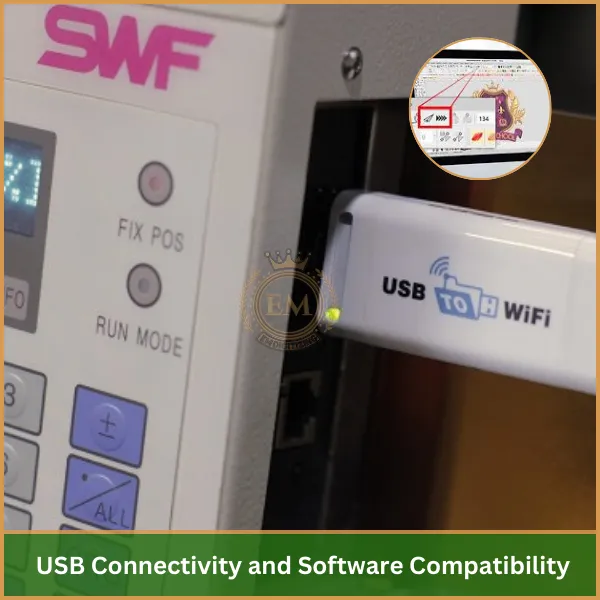
Les machines modernes offrent des ports USB qui permettent aux utilisateurs d'importer des conceptions à partir d'un ordinateur ou d'un bâton USB. Cette fonctionnalité est particulièrement utile pour les conceptions personnalisées et la mise à jour du logiciel de machine.
9. Mémoire et stockage
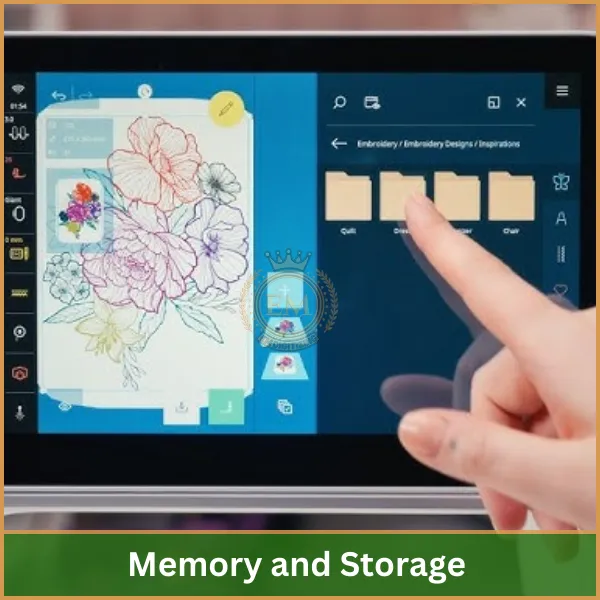
Certaines machines sont livrées avec une mémoire intégrée pour stocker les conceptions, Permettre aux utilisateurs d'économiser des modèles fréquemment utilisés pour un accès facile dans les projets futurs.
Comment utiliser une machine à broder: Guide étape par étape
L'utilisation d'une machine à broder pour la première fois peut sembler un peu écrasante, Mais en suivant ces étapes simples, Vous pourrez créer de beaux designs en un rien de temps. Ci-dessous est un détail, Guide étape par étape sur savoir comment utiliser la machine à broder.
Marcher 1: Configuration de votre machine à broder
Avant de commencer tout projet de broderie, il est important de configurer correctement votre machine.
Enfiler la machine
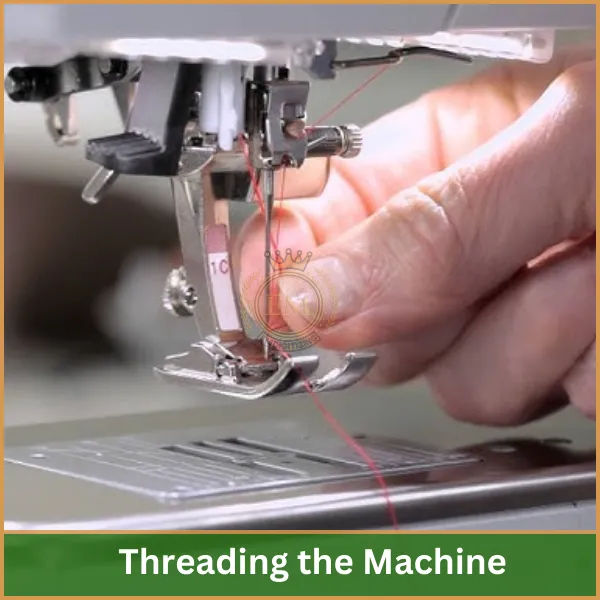
Commencez par enfiler votre machine à broder. La plupart des machines modernes ont une fonction de threading automatique, Mais si le vôtre ne le fait pas, vous devrez enfiler manuellement le fil supérieur.
- Placer la bobine de fil sur la broche de la bobine.
- Suivez le chemin marqué sur la machine pour guider le fil à travers les disques de tension.
- Tirez le fil vers le bas à l'aiguille et utilisez le filetage automatique (si disponible) Pour enfiler l'aiguille.
Insérer la bobine
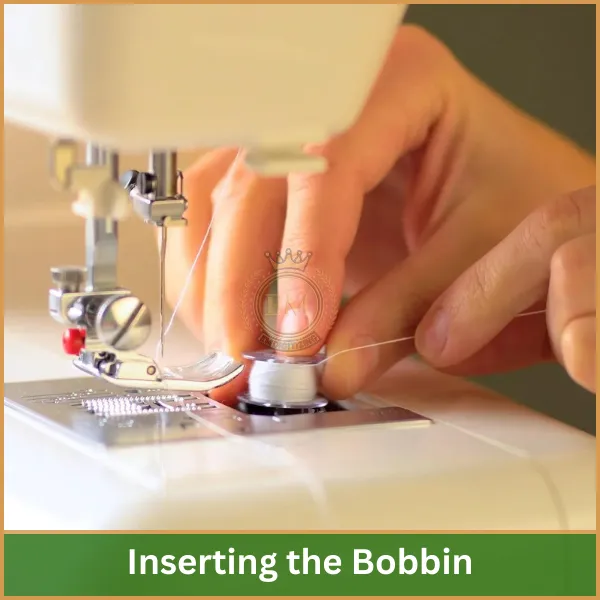
La bobine est essentielle pour fournir le fil inférieur. Voici comment l'insérer:
- Ouvrez l'étui à bobine, généralement situé sous la plaque d'aiguille.
- Placer la bobine à l'intérieur du boîtier, Assurer que le fil se déroule dans la bonne direction.
- Tirez le fil à travers la petite fente et guidez-la.
Marcher 2: Préparer le tissu
Une bonne préparation du tissu assure des coutures lisses et des résultats précis.
Choisir et préparer le tissu
Sélectionnez le tissu sur lequel vous souhaitez broder. Pour les débutants, Un tissu moyen-poids comme le coton ou le linge fonctionne mieux.
- Placez votre tissu entre les deux parties du cerceau de broderie.
- Serrez le cerceau pour vous assurer que le tissu est étiré et exempt de rides.
Ajout de stabilisateur
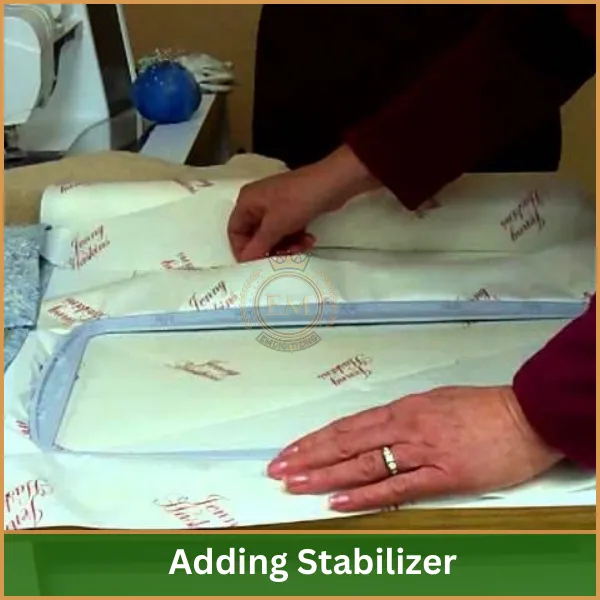
Un stabilisateur aide à maintenir votre tissu stable pendant la broderie, Empêcher le pliage ou l'étirement.
- Choisissez le bon stabilisateur en fonction de votre type de tissu (par exemple., arracher, en coupe, ou soluble dans l'eau).
- Placez le stabilisateur derrière le tissu avant de le cerceau.
Marcher 3: Sélection et ajustement de la conception
Maintenant que votre tissu est préparé, Il est temps de choisir la conception.
Choisir votre conception
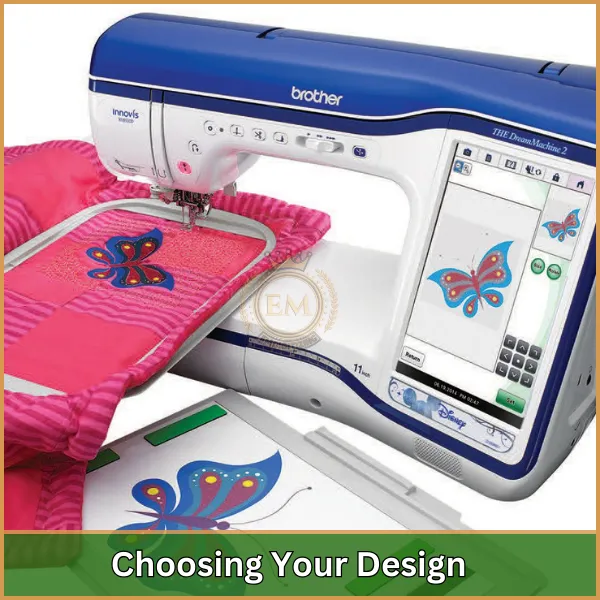
La plupart des machines sont livrées avec des conceptions intégrées, ou vous pouvez en télécharger un personnalisé.
- Use the machine’;S affichage pour faire défiler les conceptions disponibles.
- Si vous utilisez une conception personnalisée, Chargez-le via un lecteur USB ou une connexion numérique.
Conseil: Si vous n'avez pas de conceptions intégrées ou si vous avez besoin de quelque chose de spécial, Vous pouvez compter sur des services émdigitisants pour obtenir une coutume de haute qualité motifs de broderie. Nous pouvons fournir le design parfait pour correspondre à votre projet.
Réglage de la conception
Avant de coudre, Ajustez la taille de la conception, orientation, et placement.
- Utilisez la fonction d'aperçu de la machine pour visualiser l'apparence du design sur le tissu.
- Redimensionner et repositionner la conception au besoin.
Marcher 4: Démarrage du processus de broderie
Tu es maintenant prêt à commencer à coudre!
Attacher le cerceau
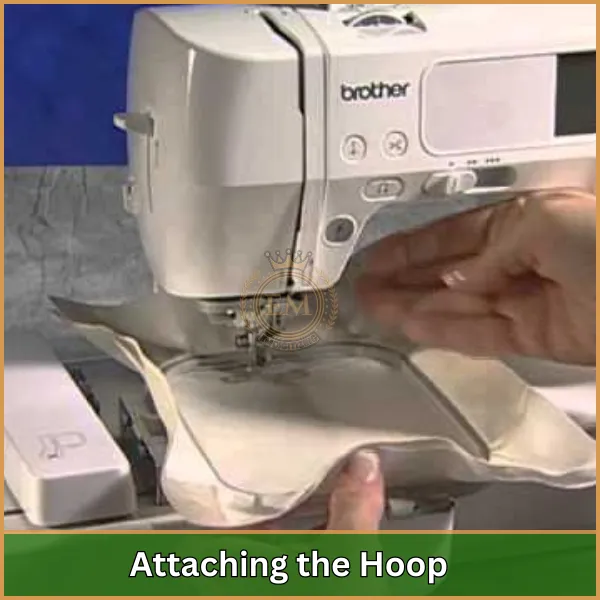
Placer le tissu cerceau sur le bras de broderie de la machine. Assurez-vous qu'il est solidement fixé, Et le tissu est plat et serré.
Démarrer la machine
Avec tout en place, Vous pouvez maintenant commencer à broder.
- Appuyez sur le bouton Démarrer de votre machine, Et il commencera à coudre le design.
- Surveillez la machine lorsqu'elle est coupée pour s'assurer qu'il n'y a aucun problème avec le fil ou le tissu.
Marcher 5: Terminer votre projet de broderie
Une fois la broderie terminée, Il est temps de terminer.
Enlever le cerceau
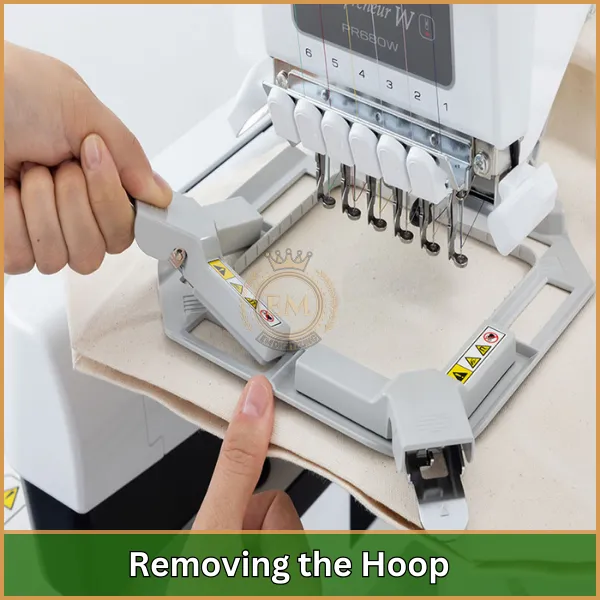
Une fois la conception entièrement cousue, Éteignez la machine et retirez soigneusement le cerceau du bras de broderie.
- Relâchez doucement le tissu du cerceau, faire attention à ne pas endommager les points.
Couper les fils
Utilisez une petite paire de ciseaux pour couper les fils lâches ou excédentaires de la conception. Faites attention à ne pas couper les points réels qui forment la conception.
Retirer le stabilisateur
Selon le type de stabilisateur utilisé, Vous allez le déchirer ou le couper.
- Pour les stabilisateurs de larmes, Tirez doucement le stabilisateur de l'arrière de la conception.
- Pour les stabilisateurs coupés, Coupez soigneusement autour de la conception, Laissant une petite quantité pour garantir que les points restent en sécurité.
Conclusion: Démarrez votre premier projet de broderie
En comprenant les bases de la machine à broder et en suivant un processus simple, Vous pouvez créer des designs époustouflants avec facilité. Avec la pratique, Vous pourrez maîtriser votre machine à broder et vous attaquer aux projets plus complexes en toute confiance.
Pour tous vos besoins de broderie, Emdigitisation est votre choix de choix. Nous offrons une qualité supérieure numérisation de broderie et les services d'art vectoriel avec des temps de redressement rapides. En offre spéciale, Les clients pour la première fois profitent d'un 50% réduction sur tous les services!
Visitez notre site Web pour obtenir un devis gratuit 5 minutes et élever votre projet de broderie avec EMnumérisation. Si vous avez des questions, n'hésitez pas à nous contacter! Merci pour la lecture.
FAQ
Apprendre à utiliser une machine à broder varie en difficulté en fonction de la complexité de la machine et de vos antécédents dans la couture, Mais les débutants peuvent commencer par des conceptions de base et progresser progressivement vers des projets plus complexes.
Pour commencer la broderie pour les débutants, it’;s recommandé de commencer par des conceptions simples, Utilisation de points de base sur une broderie avec du tissu, et passer progressivement à des modèles plus complexes à mesure que les compétences s'améliorent.
Oui, Vous pouvez apprendre la broderie à la maison via des tutoriels en ligne, cours, et de la pratique, en commençant par des points de base et des projets de base, et s'attaquer progressivement à plus conceptions complexes.
Pour utiliser une machine à broder, you’;aura besoin de la machine elle-même, fils à broder, stabilisateurs (Pour soutenir votre tissu), aiguilles à broder, et dessins, qui peuvent souvent être téléchargés ou créés à l'aide d'un logiciel spécialisé.
